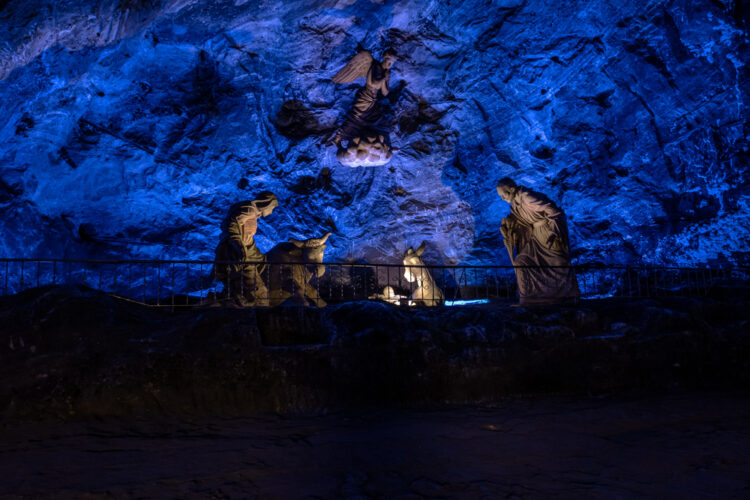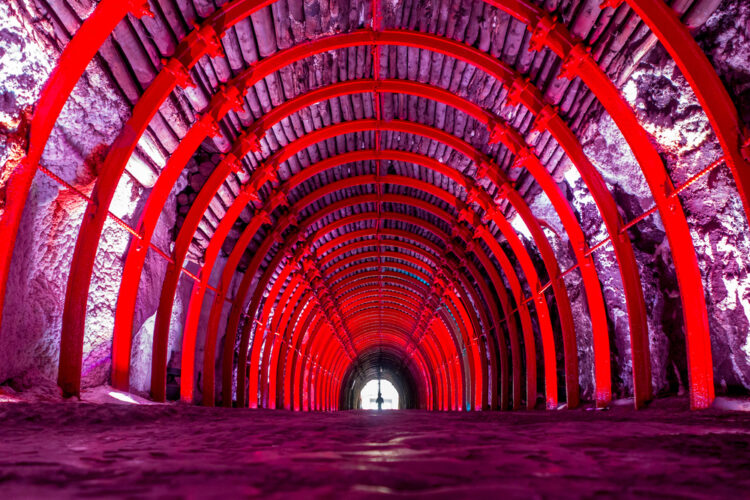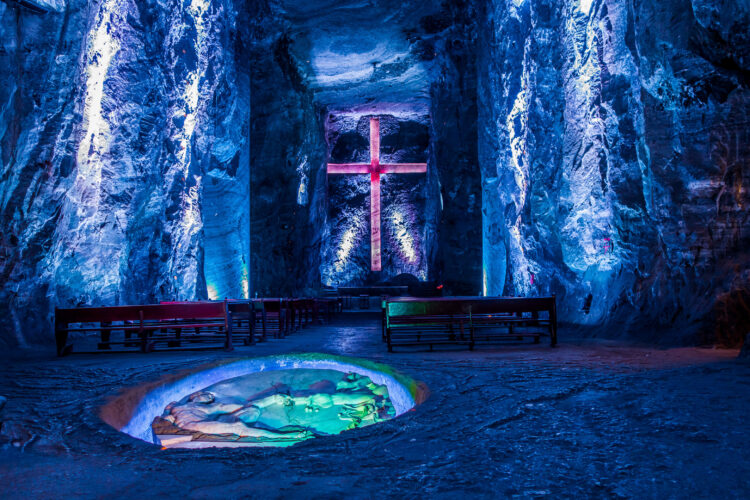The Salt Cathedral of Zipaquirá is an subterranean church located 200 meters underground in the Andean mountains of Colombia, carved out of solid rock salt. The Salt Cathedral has become a top tourist destination and an important place of pilgrimage in Central and South America.
The history of the Salt Cathedral goes back to the Muisca indigenous people who occupied this region before the Spanish arrived in the 16th century. The Muisca extracted salt from the mountains through the process of pumping water into the caves and harvesting the brine, and letting it evaporate. This mining operation created an intricate network of tunnels and caverns within the salt mountain.
When the Spanish came, they exploited the salt reserves heavily through the slave labor of the indigenous people. As mining intensified in the 19th century, the tunnels expanded deeper and deeper into the mountain. In 1954, miners accidentally dug into a huge natural cavern about 180 meters underground. This cavity was so immense that it contained a small briny lake and large stalagmites and stalactites made of salt. The miners named it the “Little Chapel” and held small religious ceremonies there.

In the 1990s, plans were made to create a full-scale cathedral within this space to attract more tourists to the salt mine. Colombian architect Luis García Nicholson drafted blueprints for the cathedral, taking inspiration from ancient Roman crypts and catacombs. Construction began in 1991 and took about ten years to complete. No heavy machinery could be used since vibrations might cause the cavern ceiling to collapse. Instead, miners used hand tools to slowly carve out rooms, decorations, stairs, and archways in the salt rock. Electric lights were installed to illuminate the space.
The Cathedral has three main sections to represent the stages of Christ’s life. The first chamber is the Bethlehem section, symbolizing his birth. It contains a crystalline nativity scene and images depicting pregnant Mary and Joseph. Stark-white stalagmites surround the space, looking like angelic guardians.
The second and largest chamber is the Jerusalem section, representing Jesus’s life and teachings. The expansive space dwarfs the tiny human figures. The rock was carved to look like drapes, recalling the Temple in Jerusalem. A reflective salt lake is said to represent Jesus’s miracles of healing.

The third chamber is the Nazareth section, depicting Christ’s crucifixion and resurrection. The hall containing the Stations of the Cross leads to an oval chamber with a towering cross illuminated from above by a single ray of light, symbolizing Jesus rising from his tomb.
The Cathedral’s miners intricately carved Biblical passages, religious images like the Last Supper, and geometric figures into the salt rock walls. Soft lighting filters through the translucent stone, creating an ethereal glow. The salt crystal acoustics allow for haunting notes when choirs perform.
While mainly a tourist attraction today, the Salt Cathedral still holds religious services every Sunday, attracting up to 8,000 people. Groups can hold weddings, baptisms, and funerals in its underground chambers.


